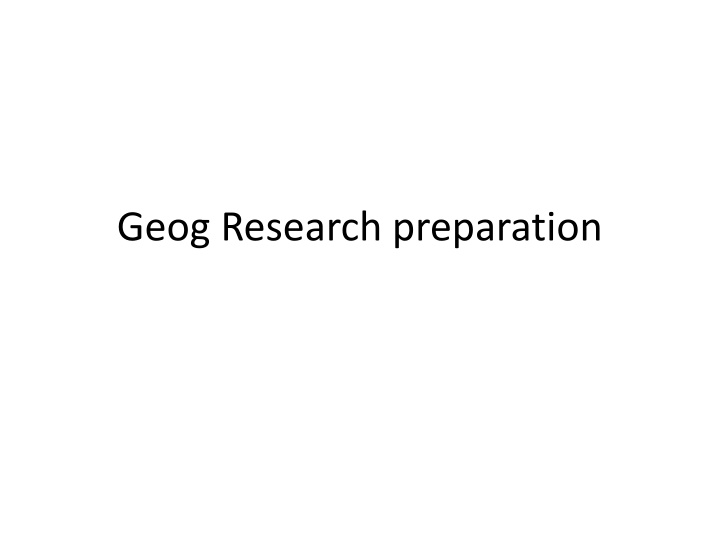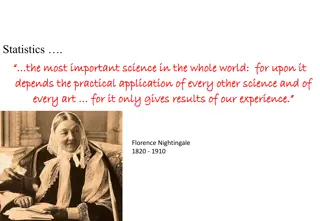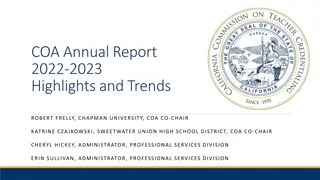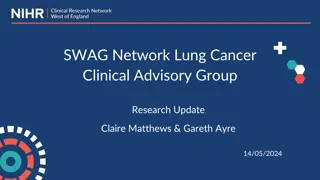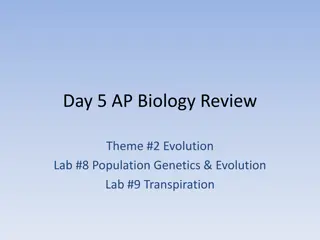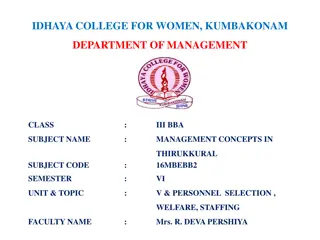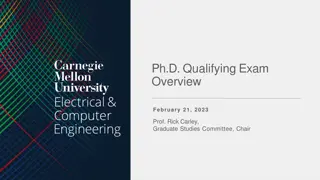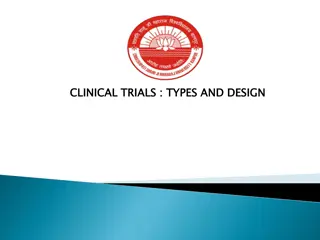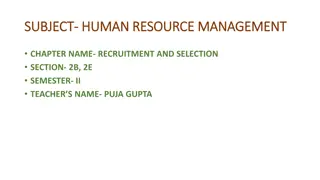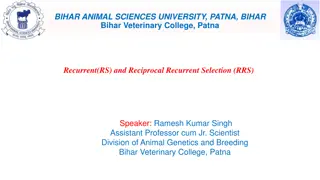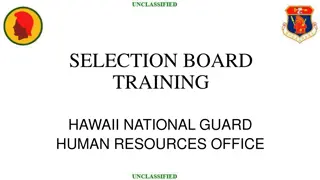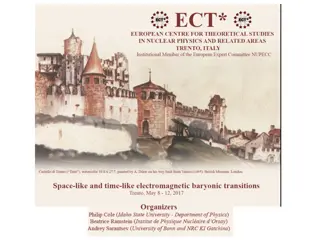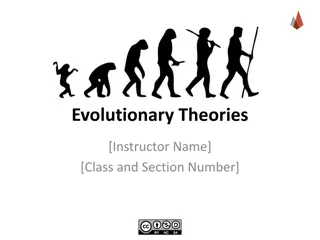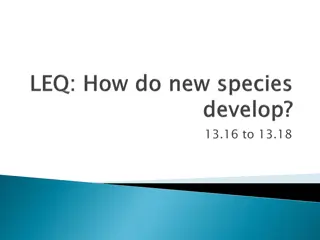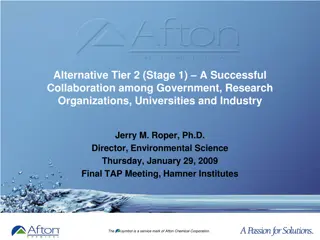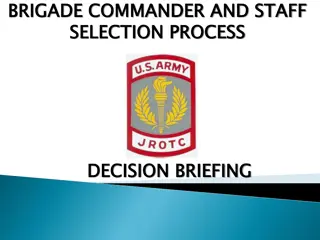Geog. Research Preparation: Objectives and Case Studies Selection
In this research preparation, students focus on selecting a range of case studies, defining terms, identifying relevant concepts/models, and applying them to real-world scenarios. The feedback from examiners emphasizes the importance of applying models, using precise terminology, and avoiding first-person writing. The provided case studies cover various natural disasters and governmental responses, highlighting lessons learned and vulnerabilities. The content emphasizes the need for rigorous analysis and application of knowledge in geographical research.
Download Presentation

Please find below an Image/Link to download the presentation.
The content on the website is provided AS IS for your information and personal use only. It may not be sold, licensed, or shared on other websites without obtaining consent from the author.If you encounter any issues during the download, it is possible that the publisher has removed the file from their server.
You are allowed to download the files provided on this website for personal or commercial use, subject to the condition that they are used lawfully. All files are the property of their respective owners.
The content on the website is provided AS IS for your information and personal use only. It may not be sold, licensed, or shared on other websites without obtaining consent from the author.
E N D
Presentation Transcript
Objectives Select range of case studies and justify selection Deconstruct question define terms eg tectonic event profile/responses of people and governments Select which concepts/models are relevant and why (include misconceptions) Start to APPLY them Share success criteria using mark scheme/examiners report
Examiners feedback Models were popular , however, it is significant that many candidates would explain the models, e.g. Dreggs, Parks, but would not then apply it in their discussion of an issue/case study. This was a significant weakness. There was some lack of rigour in the use of subject specific terminology; indeed some had minimal use at all with linked simple syntax. Higher level terminology is to be encouraged given this is an A2 exam. Go for it- eg Lahar/ pyroclastic flow/ large scale ground displacement-Quake Lakes!!!!! There was also a general lack of precision in the nomenclature of places; the U.S.A was America, and Africa seemingly considered to be a nation state. Know where- but don t draw a map !!!!! Lastly on QWC: writing in the first person In my exam I am goingto talk about . is to be discouraged.
Great Case studies-Select with reason Indian Ocean Tsunamis created by quake 2004-Global scale/ global response UN/DEC -Modify loss Burden-scale/speed of onset-Problems with aid-lessons learnt internationally Iceland- 2010Glacial melt locally (Jokulhaulp) /Ash over N Europe-Gov response and critisism and bias /Control mitigation strategies by Civil Aviation Authority Haiti-2010 EQ Shallow, high magnitude, low frequency event near densely pop capital city of highly vulnerable state application of Dregg s model Why so vulnerable? ( recent bias in news reports/aid messages) Pinatubo-Volcano-Ash/Laha/ application of Park model also
China- 2008 Wenchuan- EQ- landslides/ massive displacement/lakes created ...flood risk in transition economy-rapid response and questionable government role (bias) Use of new technology (satellite) to respond during secondary impacts. Modifying event? Etna-channelling lava flow Montserrat- Pyroclastic flows modifying human vulnerability/Tolrance levels of community/evacuation/zoning/ monitoring-Globalisation science community /commonwealth links and migration USA California EQ s frequent low magnitude?-Key role of USGS and FEMA-planning regs/retro fitting/design- preparedness Techno- fix
Tectonic event profile Plot the profile of selected case studies on a graph so you can compare them at a glance- (relative to each other) and reveal the complex variation of impacts e.g. of Earthquakes Magnitude Speed of onset Duration Aerial extent Frequency Spatial predictability
1.2 Event profile of hazards, including frequency, magnitude, duration and areal extent. Not all tectonic hazards are the same Event profiles are a common way of comparing different hazards In this example the 2004 Asian Tsunami and ongoing eruption of Kilauea on Hawaii are compared Hazard profiles can be drawn for any event. The nature of the hazard creates the level of challenge Refer to the event profiles you have drawn for your 6 detailed case studies. Draw event profiles so you can compare and contrast your examples http://www.fs.vsb.cz/akce/1999/icee99/Proceedings/Images/return.gif 7
4.1 The varying approaches of individuals and governments to coping with tectonic hazards in countries at different stages of development. People cope with natural hazards in very different ways The chosen ways are often related to wealth and access to technology Move to a safer location Modify Loss Humans do have a capacity to ignore or seriously underestimate risk, even when it seems obvious to others Often it may seem obvious that people should move out of harms way, but in reality this may be impossible. Modify human Vulnerability Modify the Event http://www.fs.vsb.cz/akce/1999/icee99/Proceedings/Images/return.gif 8
Who are the Key players? Remember to demonstrate understanding of range of Scales Local communities Regional bodies/authorities- US state emergency services National agencies eg USGS/ FEMA N. G.O. s DEC-disasters and emergency committee Global regions eg Central American scientific community UN / International scientific bodies
Central Focus? What contributes to or determines the response decisions made by key players. What, for example is the relative importance of frequency and spatial predictability over magnitude. How important is the signature profile of individual/similar events Do decision makers learn from previous events in different places.
Models Select and APPLY them- the easiest way is to redraw them with a case study included e.g Park s model applied to Pinatubo
Put your case studies in groups....But is it as simple as MEDC/LEDC?
Secondary impacts analysis-Wenchuan Earthquake 2008.
Risk intolerance threshold... Apply to Montserrat
Select & Collect a range of (accurate) references ...Harvard system Books Television/Video Haiti Earthquake(2010) Channel 4 programme Montserrat (1998) .......... Killer Volcanoes (Channel 4 May 2010) Web sites USGS www/.......USGS (2010) Updating faultlines in California FEMA- UN (2010)Haiti response-learning the lessons from Bandah Aceh New York times online Newspaper Times-Icelandic Ash brings Chaos to Northern Europe Gaurdian......... Academic Journals Liou, Kar, and Chang, 2009: Use of high-resolution Formosat-2 satellite images for post-earthquake disaster assessment: A study following 12 May 2008 Wenchuan earthquake. Int. J. Remote Sensing, accepted on 14 May 2009. Gates, A.E & Ritchie. D. (2007) Encyclopaedia of Earthquakes and Volcanoes Waugh 1996-Chapt 1 ( pages....) Mt Pinatubo AS /A2 text books......
A grade: Success Criteria Well focused introduction, clear discussion, definitions linked to title with case study justification Well selected research: range of case studies and examples used to support argument. Don t waste time on location maps!!!!!! Referencing/sourcing should feature throughout the answer Able to formulate arguments and maintain discussion e.g. using questions through report Effective conclusion linked back to main body & on-going evaluation within essay-bias and different perspectives/question validity e.g. You tube/Western Eurocentric perspectives report- shows complexity of the Q Well written, uses evaluative language and specialist terminology, May be topical, uses any models and diagrams effectively-not bolted on May be more essay based this first series than proper report style
